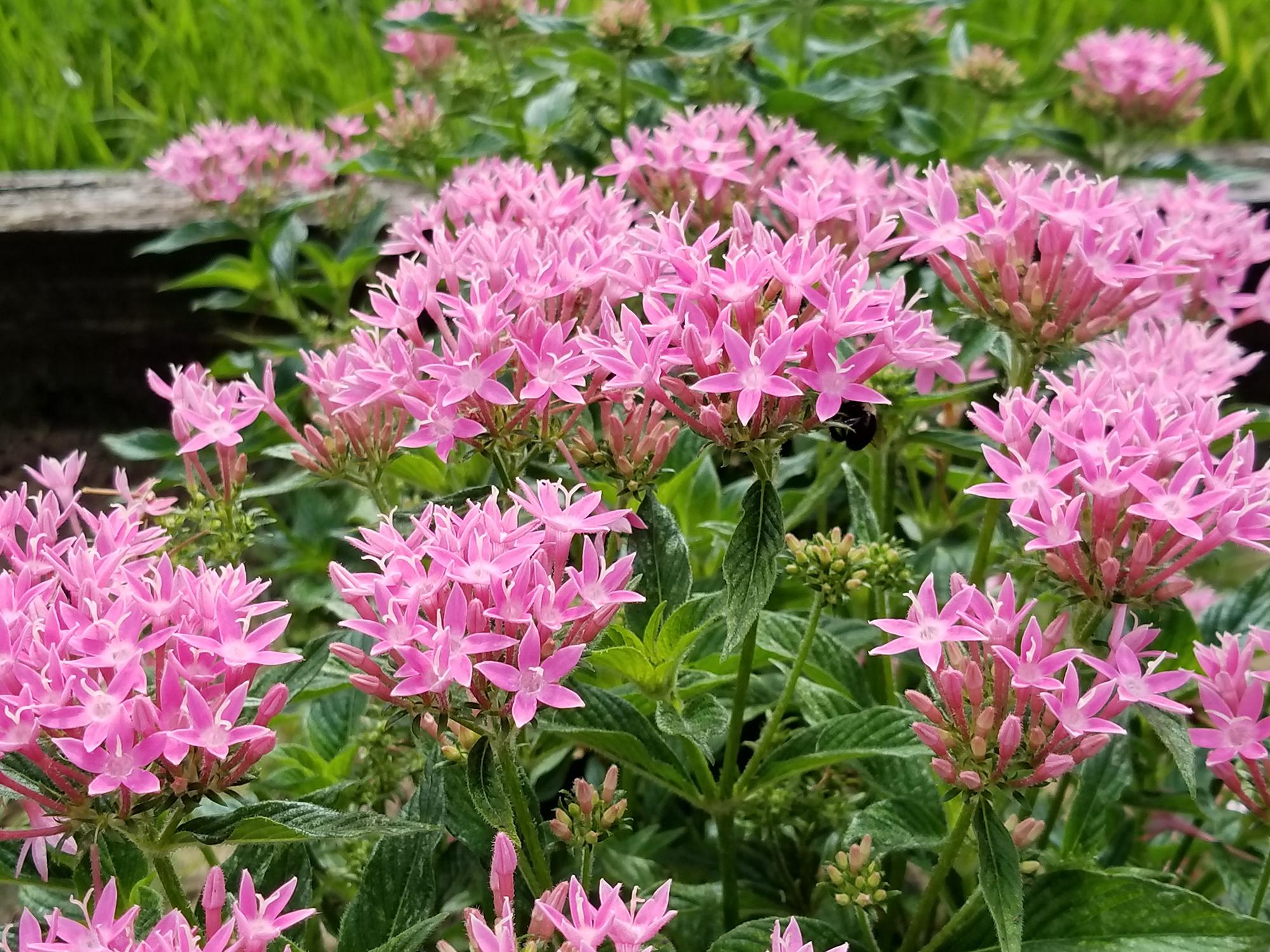Information Possibly Outdated
The information presented on this page was originally released on September 4, 2017. It may not be outdated, but please search our site for more current information. If you plan to quote or reference this information in a publication, please check with the Extension specialist or author before proceeding.
Pentas shine brightly through late summer
I’m often asked which flowering plants I think are best for our landscapes and gardens. This is not a simple question!
Through the Southern Gardening column and television program, I try to highlight great garden plants. Of course, these flowering plants happen to be my current favorites. That means my list of favorites is in a constant ebb and flow, as many readers know.
Today, I want to tell you about a landscape star that is shining brightly while others have faded pretty badly as we near the end of the meteorological summer. Today’s star is the penta. The reference to stars is very apt, as one common name for this plant is Egyptian Star Cluster.
The name “penta” comes from the Latin word for “five,” as each small flower has five petals. Penta blooms are produced in clusters of flowers from spring until frost in the fall. It’s common for each penta to have up to 20 clusters of flowers at any given time. I find that very impressive.
Besides providing great color for us to enjoy, pentas are a garden magnet for butterflies and hummingbirds because they are rich sources of nectar. These plants have great tolerance of Mississippi’s summer heat and humidity. They also add an almost tropical feel to the porch or patio, especially when mass planted in landscape beds or containers.
A favorite for well over a decade has been the 2001 Mississippi Medallion winner Butterfly penta. This variety has many colors available, all starting with Butterfly: deep rose, white, blush, deep pink, light lavender, lavender and red. With a little TLC, Butterfly pentas will produce flowers all summer long.
Butterfly pentas grow up to 24 inches tall and about 18 inches wide and should be planted about 15 inches apart.
But my new favorite pentas are in the Lucky series. These plants have the same color palette of the Butterfly series, but they are even better. Lucky pentas are well branched with a more compact growth habit.
I mentioned earlier that pentas require a little TLC to bloom all summer. After bringing your plants home from the garden center, be sure to plant them in a location that gets full sun for at least six hours a day.
Good drainage is important, so if planting in a landscape bed, go ahead and work in several inches of good composted organic matter. On a side note, this is good advice whenever and whatever you’re going to plant in the ground.
Pentas perform best with a neutral soil pH (about 7.0), so they appreciate the addition of a little dolomitic limestone. A word of advice: Have a soil test done at least every two to three years in your landscape beds, primarily for the soil pH recommendations.
I have one final tip for success with your pentas. Be sure to deadhead the spent flower clusters, as this promotes more flowering later in the summer. But I wouldn’t wait to deadhead your pentas. These flower clusters make great additions to any summer fresh arrangement to enjoy in the house.




